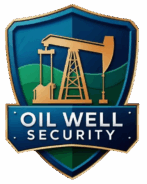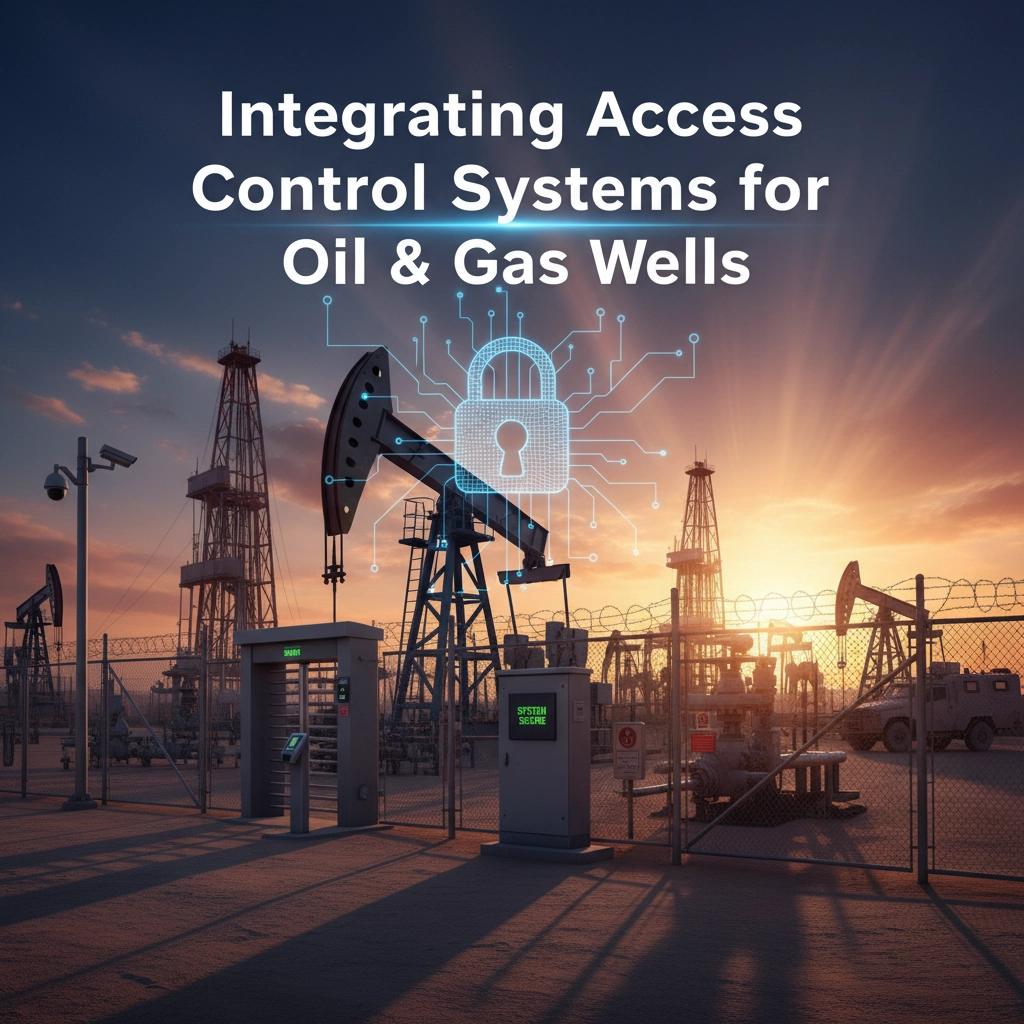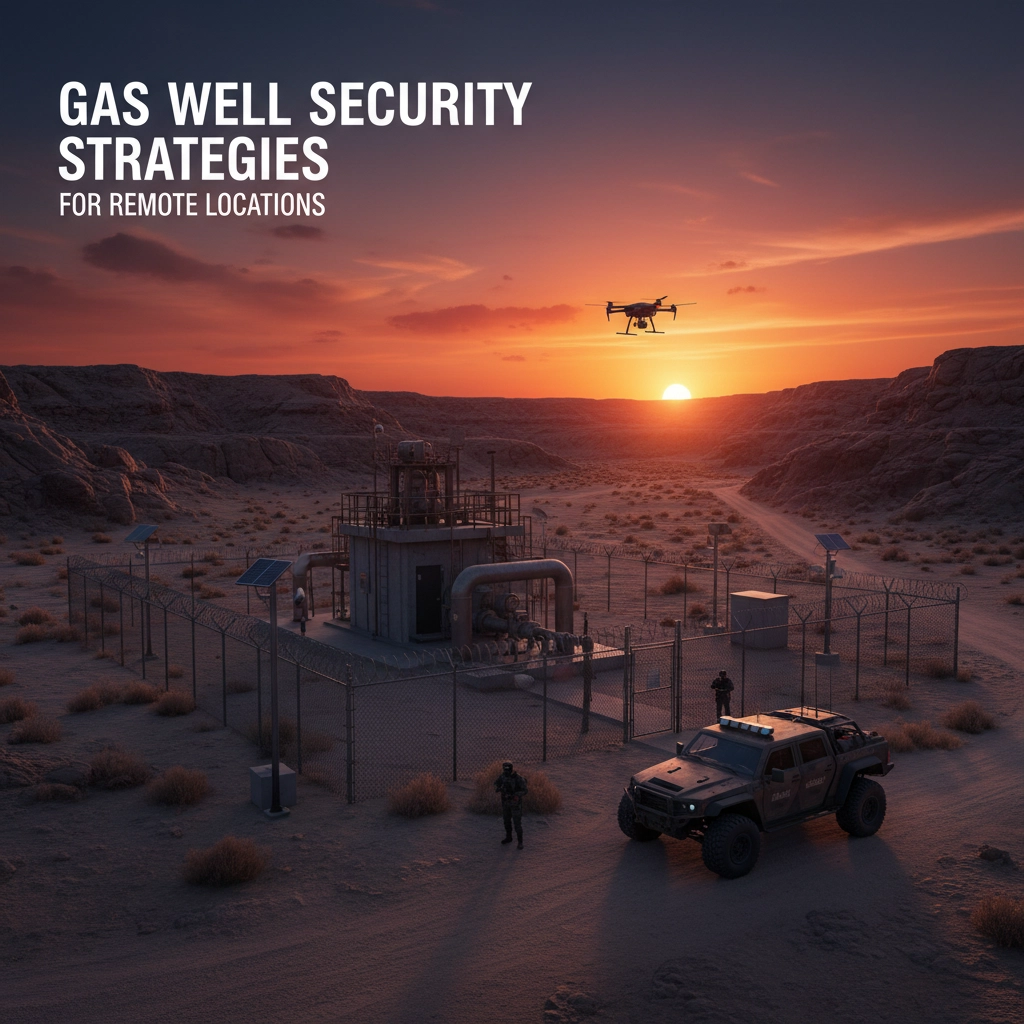Remote gas well operations face unique security challenges that can make or break your investment. With assets scattered across vast territories and minimal on-site personnel, your wells become prime targets for theft, vandalism, and operational disruption. This comprehensive guide breaks down everything you need to know about securing remote gas well operations in 2025.
The Foundation: Multi-Layered Physical Security
Perimeter Protection That Actually Works
Your first line of defense starts at the property boundaries. Modern perimeter security combines multiple integrated elements to create an impenetrable barrier against unauthorized access. Strategic placement of cameras and motion sensors ensures complete coverage of vulnerable areas, particularly around storage facilities and wellhead equipment.
High-intensity LED lighting systems eliminate blind spots and make suspicious activity impossible to hide. These aren't just basic floodlights, advanced lighting systems feature motion-activated capabilities that conserve energy while maintaining readiness to spotlight intruders the moment they breach your perimeter.
Gate access control systems manage vehicle and pedestrian access at entry and exit points using credential readers, license plate recognition, and remote management capabilities. This prevents unauthorized access while maintaining operational efficiency for legitimate personnel.

Electric Security Fencing: Your Psychological and Physical Deterrent
Electric fencing delivers one of the most effective deterrents against unauthorized intrusion and theft for gas facilities. The system functions as both a physical and psychological barrier, the mere presence of an electrified fence sends a clear message that your facility is protected.
For persistent intruders, the electric fence delivers a pulsed electric shock designed to be memorable but not harmful. Clear warning signs alert potential criminals to the fence's capabilities, often preventing theft attempts before they begin.
Key advantages include seamless integration with other security layers, solar-powered operation for continuous protection during outages, and advanced monitoring capabilities that immediately alert security personnel to tampering attempts.
Intelligent Video Surveillance and Alarm Integration
Video surveillance systems monitor critical areas 24/7, but modern systems go far beyond basic recording. Strategically placed cameras cover wide areas including perimeters, entry points, storage facilities, and control rooms, while intelligent video analytics use advanced algorithms to automatically detect and alert security personnel to potential threats.
Integrated alarm systems automatically notify security personnel and local law enforcement to breaches. These weatherproof systems operate reliably in harsh conditions, combining bright lights and loud alarms to disorient intruders while alerting your security team.
Operational Monitoring and Well Control Systems
Real-Time Monitoring for Early Threat Detection
Advanced real-time monitoring systems are invaluable for detecting early signs of well control issues before they become catastrophic problems. These systems continuously track key parameters such as wellbore pressure, mud flow, and gas detection, offering early warnings of pressure anomalies that could indicate tampering or operational issues.
Real-time data collection enables rapid decision-making and prevents failures that could result in environmental contamination, personnel injury, or significant financial loss. Your monitoring system becomes your early warning network for both security and operational threats.

Emergency Response Protocols
Emergency well control protocols include continuous monitoring of pressure, well integrity, and equipment functionality. If situations escalate, well control experts can initiate measures such as well killing operations, circulating drilling fluid, or activating remote control systems to stabilize the well.
These protocols reduce the economic, environmental, and human risks associated with both security breaches and operational failures, creating a comprehensive safety net for your remote operations.
Cybersecurity Architecture for Remote Operations
Defense-in-Depth: Your Digital Fortress
Defense-in-depth architecture serves as the fundamental cornerstone of protection for gas infrastructure operations. This approach implements multiple layers of complementary security controls throughout your organization, ensuring that if one protective layer fails or is bypassed, additional layers remain in place to protect critical assets.
Effective defense-in-depth implementation begins with conducting a comprehensive asset inventory and detailed risk assessment to identify critical systems requiring the highest protection levels. Security zones should be established based on operational function and criticality levels, with appropriate controls at each zone boundary managing and monitoring all communications between different areas.
Network Security Essentials
Network security requires multiple complementary approaches:
- Implementing firewalls and intrusion detection systems to monitor network traffic for suspicious activity
- Encrypting communications to protect sensitive data from theft
- Performing regular system updates and patches to address new vulnerabilities
- Network segmentation to prevent security breaches from spreading throughout your facility
- Access control systems ensuring only authorized personnel interact with critical systems
Regular penetration testing simulates real-world attack scenarios, helping your gas facilities improve defensive capabilities and response procedures before criminals can exploit vulnerabilities.
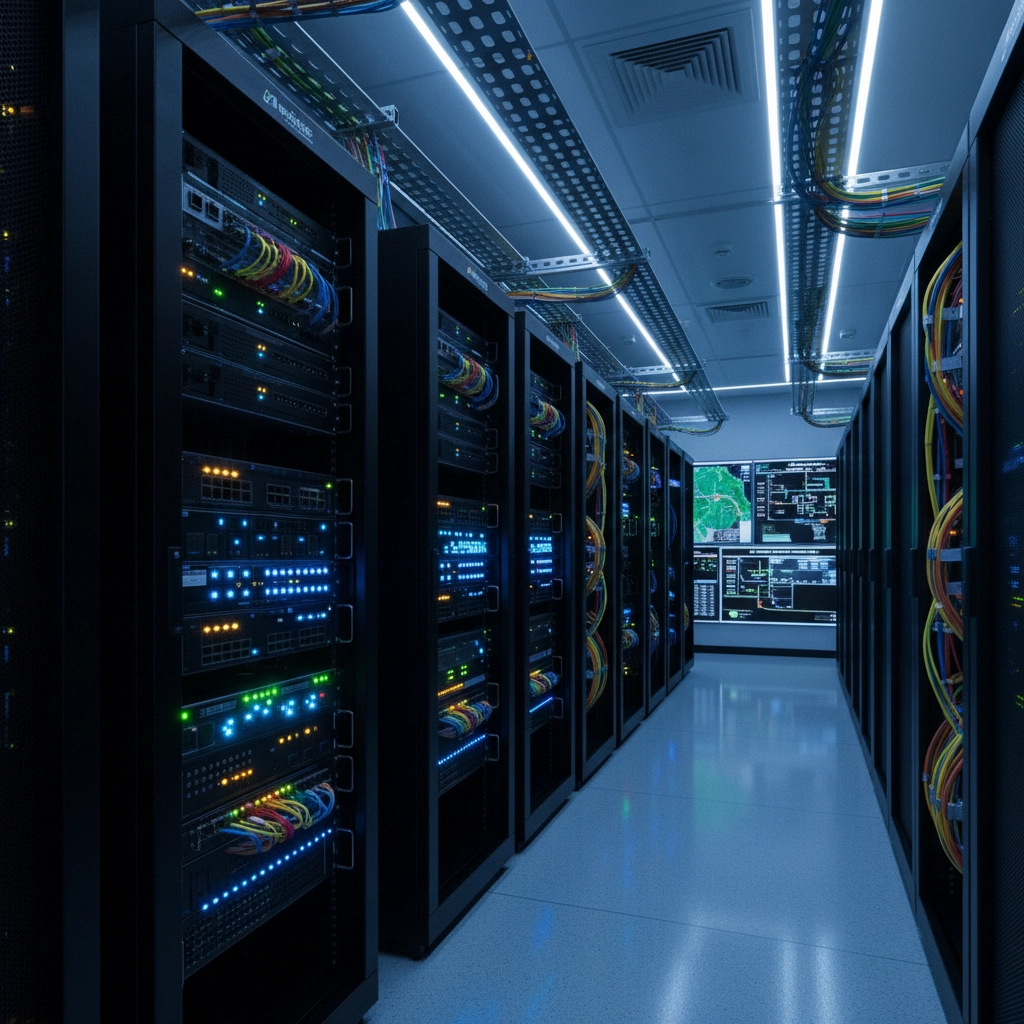
Remote Operations-Specific Security Considerations
Connectivity Architecture Decisions
For remote operations, choosing between horizontal and vertical connectivity requires understanding your specific operational and security needs. Horizontal connectivity reduces external access threats but requires robust infrastructure and management. Vertical connectivity facilitates integration with enterprise systems but necessitates stringent security measures to mitigate external threats.
Encryption and access to process control networks are managed through strong authentication and network traffic controls, typically firewalls or intrusion detection and prevention systems, before entering communication links. A hybrid approach, tailored to your facility's unique requirements, often provides the most balanced solution.
Managing Remote Access Security
Reliable connectivity is essential for remote monitoring systems to function effectively. You must assess the quality and availability of internet connectivity at your facilities and identify potential areas of concern. Connectivity issues can arise from network congestion, signal interference, or natural disasters.
Your organization should have contingency plans to mitigate connectivity issues, including backup systems, redundant networks, and alternative communication methods. Never rely on a single point of connectivity failure.
Advanced Equipment Security
Mobile and Temporary Installation Protection
Surveillance personnel should monitor short-duration stack outs and stacked drilling rigs positioned in remote sites for extended periods, potentially up to a year. Mobile trailer setups or drilling rig pusher shacks should be deployed for surveillance and security quarters with portable electric generators or public utility power when available.
This approach ensures continuous protection even for temporary installations that might otherwise be overlooked in traditional security planning.
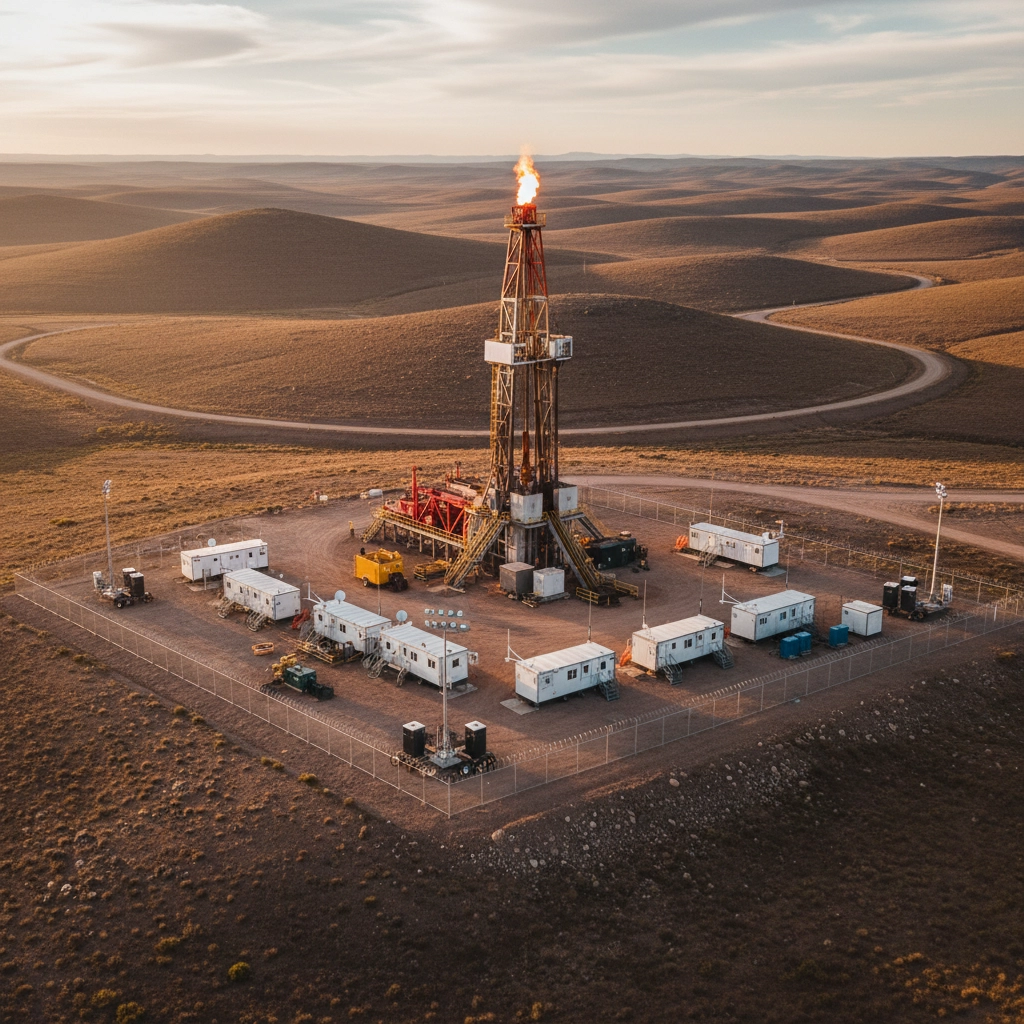
AI-Enhanced Threat Detection
Advanced monitoring capabilities spanning both IT and operational technology environments enable early detection of potential threats and suspicious activities. Security information and event management solutions provide correlation across all environments to identify anomalous behavior patterns indicating system compromise.
Artificial intelligence and machine learning technologies enhance these capabilities by automatically establishing normal operational baselines and flagging significant deviations that warrant investigation. Your security system learns and adapts to your specific operational patterns.
Implementation Strategy for Maximum Protection
Integration and Coordination
Integrating intrusion detection and access control with other security measures creates a layered approach that enhances overall protection. Consistent documentation, monitoring, and adaptation are necessary for maintaining effective security posture.
Regular testing and maintenance ensure consistent performance and rapid response capabilities across all security systems. Your comprehensive security approach requires ongoing commitment to multi-layered strategies that combine physical security measures, operational monitoring systems, cybersecurity controls, and personnel training into a cohesive infrastructure.
The ROI of Comprehensive Security
The investment in comprehensive gas well security pays dividends through prevented theft, reduced downtime, regulatory compliance, and peace of mind. Remote operations face unique challenges, but with proper planning and implementation, your security infrastructure becomes a competitive advantage rather than just a necessary expense.
Ready to secure your remote gas well operations with military-grade protection? Contact Oil Well Security today for a comprehensive security assessment tailored to your specific remote operations needs. Our veteran-led team understands the critical importance of protecting your energy investments.
📞 Call us: (970) 465-2525
📧 Email: info@oilwellsecurity.com
🌐 Learn more: https://oilwellsecurity.com
Connect with us:
LinkedIn | Facebook | Instagram | X
#GasWellSecurity #RemoteOperations #EnergyProtection #OilGasSecurity #Infrastructure #Cybersecurity #PhysicalSecurity #Innovation #Strategy #DigitalMarketing #Branding
